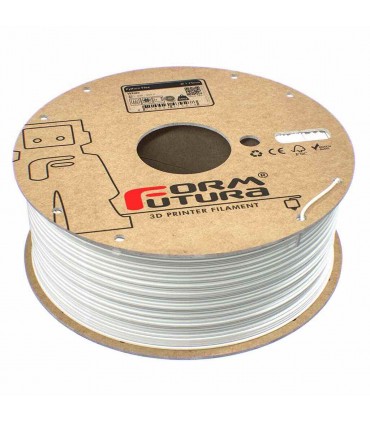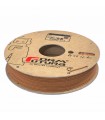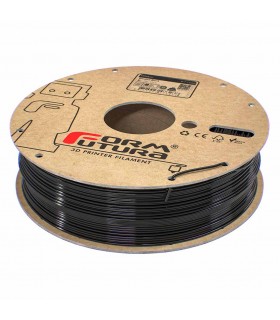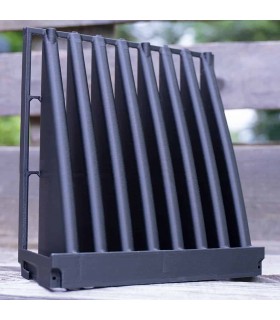Python Flex TPU 98A is a flexible type of 3D printer filament with a shore hardness of 98A and is perfect for 3D printing strong and resilient parts that require flexibility and elasticity.
Python Flex 98A is a TPU based filament which is perfect for parts needing flexibility and elasticity. It is designed for high speed printing on both direct drive and Bowden style extruders. Python Flex is an extremely easy to print flexible filament: it can be printed directly on a (unheated) glass plate.
Python Flex 98A allows itself to be stretched up to 450% before breaking. Python Flex is extremely transparent in its natural form and has excellent resistance to oil, greases, microorganisms and abrasion.
Unique features
- Perfect combination of strength, flexibility and elasticity
- Designed for high speed printing
- Flexible filament that can be printed at speeds of >80mm/s
- Heat resistant up to 138°C
- Watertight printing possible with only single wall prints
- Excellent resistance to oil, greases, microorganisms and abrasion
- Very easy to print on both direct drive & Bowden style extruders
- Warp-free printing and no deformation after cooling
- Improved flowing behaviour and inter-layer adhesion
- Good first layer adhesion to several (un)heated print surfaces
Skin Tones

General printing guidelines *
| Nozzle size: ≥ 0.25mm | Layer height: ≥ 0.1mm | Flow rate: ± 110 – 130% * |
| Print temp: ± 220 – 250° C * | Print speed: Medium-Fast | Retraction: Yes ± 5mm |
| Heat bed: ± 0 – 60° C | Fan speed: 50-100% | Experience level: Intermediate |
*) Above displayed settings are meant as guidance to find your optimal print settings. These ranges in settings should work for most printers, but please do feel free to experiment outside these ranges if you think it is suitable for your printer. There are a lot of different type of printers, hot-ends and printer offsets that it is extremely difficult to give an overall one-size-fits-all setting.
*) Print temperature depends on printing speed and wall thickness (e.g. ± 220 – 230° C for single wall objects with no infill at 50mm/s and ± 245 – 255° C for high infilled objects at 100mm/s)
*) Flow rate depends on configuration of hotend and feeder setup, but is increases when printing speed increases (e.g ± 110% for 50mm/s till even 130% for 100mm/s
Hygroscopy
Python Flex is a very hygroscopic material and will attract and hold water molecules from the surrounding environment. When opened and exposed to humidity too long this can have a negative effect on the printing behaviour and quality of the filament. It is therefore strongly recommended to immediately remove the spool from the printer after printing and store it in a vacuum bag or airtight container without silica. When the filament is too wet it is recommended to dry Python Flex in an oven or filament drying machine at 65C for approximately 6 hours. Drying times can depend on how long the filament has been exposed to humidity. Python Flex is packaged in a vacuum bag with a guaranteed moisture content of less than 0,2% to ensure ideal printing behaviour and results directly after opening the spool.



















